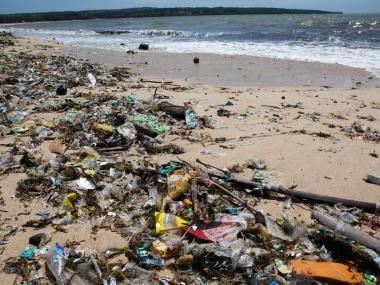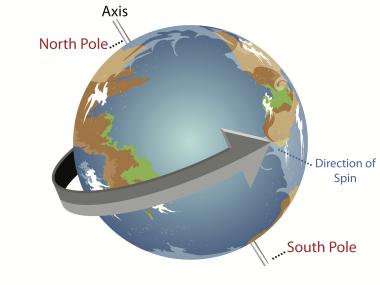How Deep is the Deepest Hole Ever Dug?
There’s a portal to the center of the earth in the wreckage of an abandoned project site in Murmansk, Russia. What’s it for? And why are people Googling “Kola Superdeep Borehole screams?”
A portal to the center of the earth sits among the ruins of an abandoned project site in Murmansk, Russia, not far from the Norwegian border. Sure, it’s covered and welded shut, but it still sounds like a horror film to me. The deepest hole ever dug may be pretty unassuming, but I suspect I’m not alone in being a little freaked out by it. An internet search about the world’s deepest hole turns up the suggestion “Kola Superdeep Borehole screams.” No wonder locals call it the well to hell.
Before the very idea of a superdeep hole starts haunting your dreams, keep this in mind—the hole is only nine inches in diameter (that’s about 23 centimeters). There’s no way you could fall into it.
How deep is the deepest hole?
Known as the Kola Superdeep Borehole, the deepest hole ever dug reaches approximately 7.5 miles below the Earth’s surface (or 12,262 meters), a depth that took about 20 years to reach.
The hole was intended to go “as deep as possible,” which researches expected to be around 9 miles (that’s ~14,500 meters). But the scientists and engineers were forced to give up when they hit unexpectedly high temperatures. At 7.5 miles below the surface, the 2.7 billion year old rocks there at temperatures of around 180 degrees Celsius (or a scorching 356 degrees Fahrenheit). This was almost twice as hot as they’d predicted.
The Russian scientists in Kola described the rocks at those depths as behaving more like plastic than rock.
Such high temperatures deform the drill bits and pipes. The rocks themselves also become more malleable. The Russian scientists in Kola described the rocks at those depths as behaving more like plastic than rock.
Since the drilling was stopped in 1992, and the project site was abandoned around a decade later, the Kola Superdeep Borehole has maintained the record for the deepest artificial point on Earth. Humans have since dug longer boreholes, including the 12,289-meter borehole drilled in the Al Shaheen Oil Field in Qatar and the 12,345-meter offshore oil well near the Russian island of Sakhalin. But the hole in Kola remains the deepest.
Why do we dig deep holes?
There are a few reasons we humans dig deep into the Earth—extracting resources like fossil fuels and metals, for starters. A 100-year-old copper mine in the mountains near Salt Lake City, Utah hosts a pit that extends three quarters of a mile deep and spans 2.5 miles. At 215 meters, the Kimberley Diamond Mine in South Africa is one of the largest holes in the world dug by human hands.
[Great] depths are needed to pick out the faint signal of neutrinos from the stronger background radiation at the Earth’s surface.
We also dig, of course, for science. Experiments looking for neutrinos, nearly massless subatomic particles that get produced in explosive astronomical events like exploding stars and gamma-ray bursts, have to put their detectors far below the Earth’s surface. That’s the case for the University of Wisconsin’s IceCube Neutrino Observatory in Antarctica. These depths are needed to pick out the faint signal of the neutrinos from the stronger background radiation at the Earth’s surface. In the case of IceCube, their experiments run as far down as 1.5 miles via holes “dug” by pouring tens of thousands of pounds of hot water to melt the ice.
Drilling the Kola Superdeep Borehole was, for the most part, purely science-driven. Soviet scientists wanted to learn more about our planet’s outermost layer, called the crust, to understand how that crust has formed and how it evolved. Now, I say “for the most part” because people have likened efforts to dig the deepest hole to the space race. Science was the goal, but everyone wanted bragging rights for winning the race to the center of the Earth.
An American effort, known as Project Mohole, attempted to drill deep into the floor of the Pacific Ocean off the coast of Mexico in 1958. The project’s goal was to reach the boundary where the Earth’s crust meets the next layer, called the mantle. Congress discontinued funding in 1966 when the drillers had reached only 183 meters (or a tenth of a mile).
In the early 90s, German scientists reached about 6 miles below the surface in Bavaria with the German Continental Deep Drilling Program. There, they hit seismic plates and found temperatures of 600 degrees Fahrenheit. Due to lack of funds, that project was also abandoned.
The Japanese drillship Chikyu has drilled almost 2 miles into the ocean floor, the deepest we’ve dug in the ocean for science. BP’s Deepwater Horizon, which was lost in the infamous explosion and oil spill in 2010, holds the overall record for deepest offshore hole at about 5 miles below the sea floor.
What did we learn from the borehole?
Although it didn’t reach the planned depth, the Kola Superdeep Borehole was still an impressive feat of engineering. New drill technology had to be developed to make the project possible. That includes a drill bit at the end of the shaft that rotated separately and a custom drill bit that pumped a type of lubricant, known as pressurized drilling mud down, to the drill site.
At 4.4 miles down (~7 kilometers), scientists found two-billion-year-old fossils from single-celled marine organisms.
Scientists were also surprised by what they found in that hole. For starters, they obviously learned that our temperature map of the Earth’s interior had to be updated since they hit hotter temperatures earlier than expected. At 4.4 miles down (~7 kilometers), they found two-billion-year-old fossils from single-celled marine organisms. And as deep as they dug, they found liquid water, which is far deeper than we had previously thought that water could exist. The scientists think that water may have been squeezed out of the rock crystals due to the incredibly high pressures.
How low can we go?
We know surprisingly little about the interior of our planet given that it is just below our feet.
The Earth’s outermost layer, the crust, is about 25 miles thick below the land. That means the next layer, the mantle, doesn’t even start until nearly 25 miles (40 kilometers) below the surface and continues for another 1800 miles. That means that despite the impressive nature of the Kola Superdeep Borehole, it still only penetrates about a third of the Earth’s crust and 0.2% of the entire distance to the center of the Earth.
Being able to probe deeper toward the mantle will help us understand why earthquakes happen, how our planet formed, and how life may have originated on Earth.
The next big push for science is to make it to the mantle. There, scientists expect to encounter temperatures of 250 degrees Celsius or about 500 degrees Fahrenheit. The mantle holds the imprint of the geological record of the Earth’s history, much like how we can trace the history of organisms on the Earth’s surface through the layers of rock we see there. Being able to probe deeper toward the mantle will help us understand why earthquakes happen, how our planet formed, and how life may have originated on Earth.
The latest effort to reach the mantle is being led by the Center for Deep Earth Exploration, owners of the drilling vessel Chikyu. They expect the project to take dozens of years and one-billion dollars. Chikyu is mostly funded by the Japan Ministry of Education, Culture, Sports, Science and Technology, and the US National Science Foudnation. Other partners include the European Consortium of Ocean Research Drilling, the People’s Republic of China, the Republic of Korea, India, Australia, New Zealand, and the Federal Republic of Brazil.
It may be that figuring out what sits beneath our feet requires a truly global effort.






